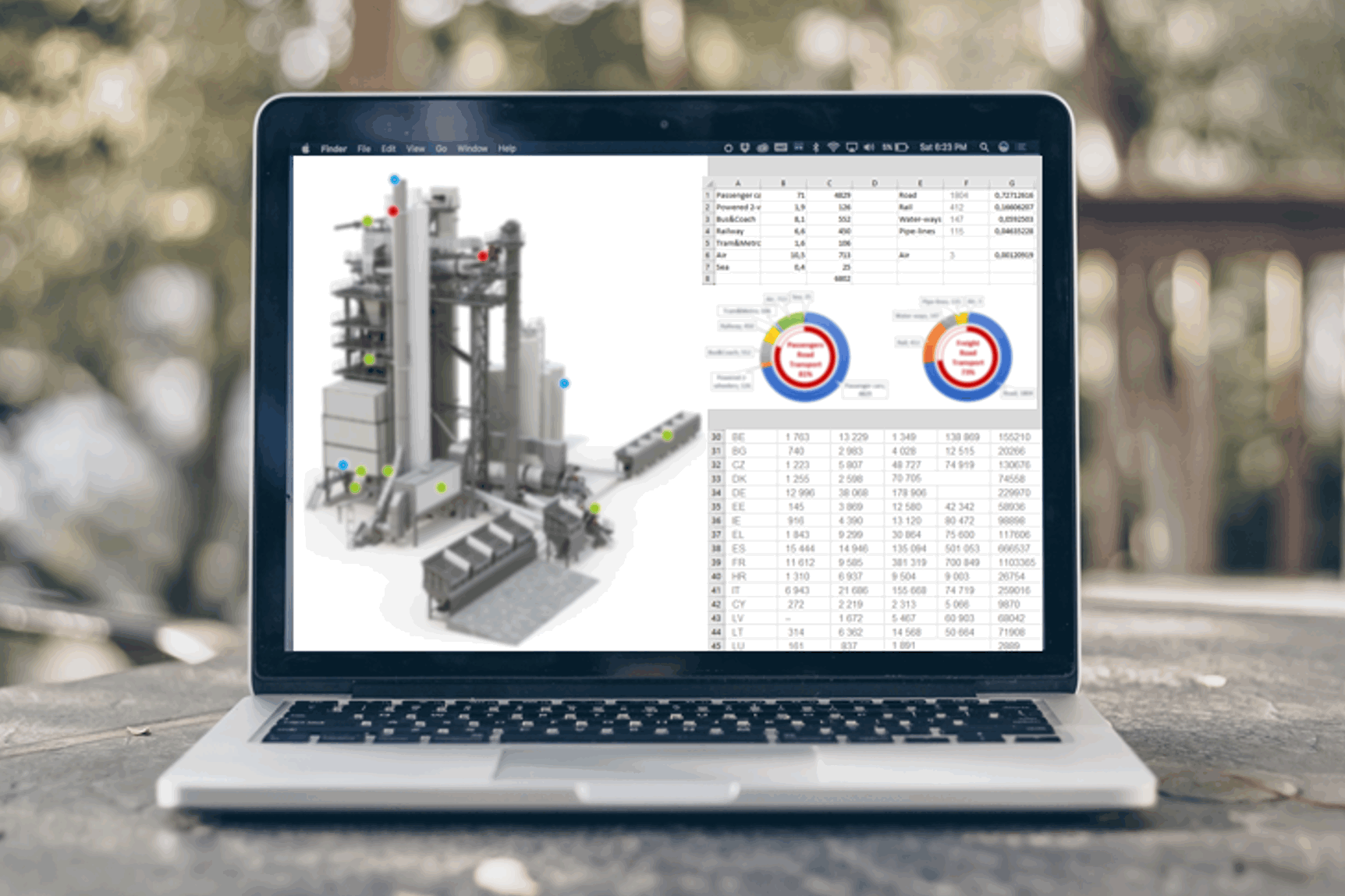Nowadays, the needs of obtaining, processing, storing and transferring information are increasing significantly. With all the data acquisition systems and cloud file uploading technology commented above, the next challenge is not only collecting the data but also identifying and filtering the useful one, as well as stablishing effective and efficient communication channels between information systems. In other words, it is important to manage information and not simply data.
In this regard, numerous initiatives have arisen across the world with more or less similar approaches. In general, most of these digital tools consist on completely linked platforms involving geographic information systems (GIS), asphalt logistics, process registration and road management systems, which allow the long-term road monitoring, risks quantification and anticipation at the design stage, and consequent product development and innovation based on reliable data.
With these technologies, all allowed stakeholders will have access to the relevant information of the materials included in the pavement and at all stages (i.e. design, construction, service and end-of-life). Hence, the exchange of information between clients, producers and other construction partners is simpler and more transparent, effective and efficient, even when the information is needed after years of being produced and stored.
For the client, the development of data recording and monitoring systems are becoming crucial tools for the verification and validation of the undertaken work, and also aid to dynamically adjust inspection frequencies and approve them based on big data, as well as stablish better control on desired policy. In addition, the step from functional specification to functional verification is also possible by integrating systematic data storage systems, which facilitate the assessment of a given asphalt mixture, based on functional tests and after processing the road construction, instead of the current material assessment at the producer’s gate.
These systems can also provide inside into Key Performance Indicators (KPI) for analysis and management purposes. For this reason, they can play an important role within the CE marking, which is based on the characterisation of asphalt products according to specifications and type tests, in a way that the client can choose the desired material, and the asphalt plant must produce it within strict tolerances. The manufacturer can provide the information of which standards have been used, while the contractor can demonstrate that the delivered asphalt has the required properties and prove that the work was carried out in accordance with requirements, plans and (internal) procedures. Hence, these technologies can also add support to contractors in issuing years of guarantees for the performance of delivered products.
The systems also offer the possibility of creating “blueprints” of pavement sections containing the same structure and materials. This allows the location of analogous pavements throughout the geography of a given region and compare and assess their performance. Based on this, abnormal behaviours can be detected, incidences can be forecasted and decisions about the suitability of such section for future implementations can be taken.
The physical information related to pavements can be mainly recorded based on the material and the spatial composition. The first gives insight about the pavement structure (materials, layers, thickness, etc.) being useful during the construction phase, when daily production, equipment allocation and costs must be planned and managed. The latter gives spatial information, for example, where the loads are applied, being a useful tool during the service stage, when inspections, surveys or maintenance operations might be carried out. With the combination of both levels of information, if damage is detected at a certain section, it is easier to find out the cause, based, for example, on the characteristics of the materials in that section (source, properties, mix design, batch reference, problems during production, etc.), as well as acting loads, temperature, humidity or other relevant ambient conditions.
In order to steer the stakeholders involved in the road construction, EAPA proposes the following flow chart, where the information is classified depending on the stage of the lifecycle where it is relevant, and in the shape of KPIs. The flow chart also indicates the stakeholders in charge of producing or using the information and those with access to it.



